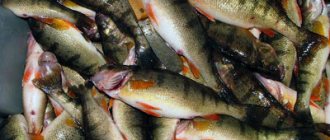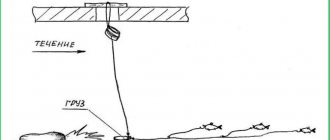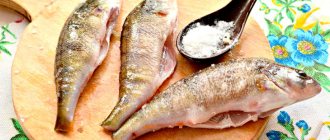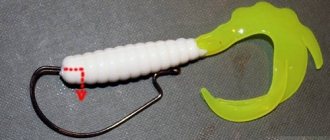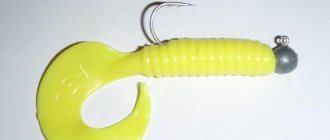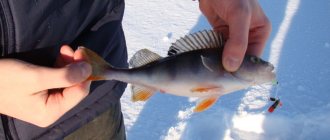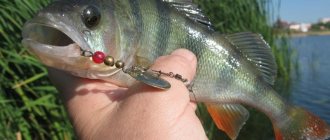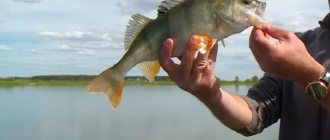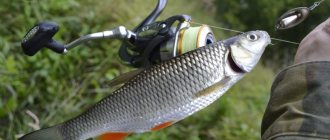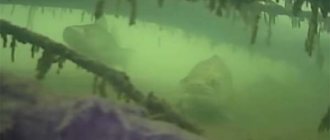Date: March 23, 2021 |
There was a time recently when the idea of spinning fishing came down to fishing with imitation fish as the main food for predators. Most spinners, wobblers, even the first silicone baits were clearly and unambiguously associated with fish. Only a small percentage of artificial baits resembled frogs or bugs. Meanwhile, it was obvious to fishermen that large predators feed on a variety of organisms, not just small fish. However, the properties of materials hampered progress and the growth of the range of forms. Leeches, worms, various insects, crayfish - all this had to be used only in live form. But progress has moved further, and we can catch excellent, varied imitations of crayfish, crustaceans, and cuttlefish. This is great! And in this post I will review my personal rating, the TOP 10 best artificial crayfish for jig fishing.
Today we can state the formation of a segment of artificial baits made of elastic material imitating crayfish. I want to talk about this group of decoys and their capabilities in this review. I will give you my TOP 10 silicone crayfish, so that you have something to focus on in your choice of the first models of this type.
Reins Ax Craw
The Reins brand has provided the fishing community with many quality edibles. These are not the cheapest, but quite affordable Japanese tires. The variety and elaboration of forms is admirable. The most important thing is that these baits are caught in our reservoirs, although they were originally designed for completely different types of fish (trout, bass, marine species).
Silicone crustaceans Reins Ax Craw were one of the first that caught my eye when I was studying the assortment of the new brand. The imitation of a crustacean is very conventional. Two pairs of legs are drawn on the ribbed neck. The dominant features of the design are large claws, more like flippers. Nevertheless, there is a resemblance to a living object. There is no doubt that fish mistake Ax Craw for crayfish, as their usual bottom food.
The decoy is available in two sizes:
- 2” (5 cm)
- 3” (7.5 cm)
The large version is suitable for large perch, pike perch, and pike. The smaller one is aimed at medium-sized perches. Small pike also catch on it.
Many edibles have a corrugated surface. This is done in order to increase the total area. More impregnation is released from a larger area, which is designed to attract fish. We see ribs on the body and claws of Ax Craw, made with exactly this calculation.
What makes this model unique are the claws. There are small spots at the ends that work on the principle of a vibrating tail. It turns out that when guiding, the crustacean sways its limbs, like a swimmer with fins. Most crustaceans are passive. To bring them to life and animate them in the water, you need to play with a fishing rod. In the case of this model, you can use an element of simple even wiring, since the claws actively play themselves. Of course, you shouldn’t skimp on various wiring techniques. Dragging along the bottom, moving with jumps, waves, and vibrations in place works well with any crustaceans.
Edibles are presented in more than a dozen shades. There are natural colors that are most appropriate for simulating a crustacean: greenish, brown, purple. You can experiment with bright colors that are not directly related to the colors of crayfish.
Mount the bait head back. Can be attached to a regular jig head. This rubber works better on an offset or single hook, articulated with an eared weight. The attachment is also quite suitable for fishing with various spaced rigs.
I recommend Reins Ax Craw as one of the best and most catchy crayfish imitations. A good place to start to become familiar with this type of silicone.
Silicone baits
Read more
It is rare that a fishing backpack today does not contain silicone baits. The popularity of the tackle was facilitated by ease of installation, versatility, and most importantly, good catchability of the bait. This type of gear appeared about forty years ago, but has been actively used by fishermen since the late 90s. Today you can buy silicone baits for catching predatory fish of almost any size.
Types of silicone baits
The bait is distinguished by a wide variety of models. There are only four main species: vibrotails, twisters or larvae, crustaceans and frogs, and worms. There is another family that defies classification - these are various kinds of silicone baits for pike, pike perch or perch, vaguely reminiscent of some type of lake or marine fauna, such as jellyfish or squid. To be fair, the latter also belong to the crustacean family. Vibrating tails and twisters are often used as silicone baits for pike perch and pike perch. With a stationary rod and even retrieve, they are capable of actively moving in the water, luring a predator. For worms, frogs and crustaceans, skillful control with retrieves and jerks of the rod is required. They also perfectly play their role as bait in more or less strong currents.
Vibrotails
The shape resembles a small fish. The tail is made in the form of a snout and is located at an angle to the body. It is thanks to the tail that the fish plays in the water. The nature of the vibrotail’s movements depends on the angle of the tail. Classic silicone baits for perch have a streamlined body with a smooth contour line. To make the fish more active in the water, most modern models are equipped with a recessed rib in the area of the narrowing towards the tail. A silicone fish of this design moves not only due to the drag force of the tail, but also oscillates in the area of the rib from the slightest water pressure. A powerful offset hook for a vibrating tail and a bait size of 50 mm and above will allow you to hook and catch a large predator.
Twisters
They resemble a tadpole or larva in appearance, but with a pronounced spiral or curved tail. In water, the tail of the twister reacts to any movement of the environment, causing the bait to make vibrations that are quite natural for fish and small in amplitude oscillations. Twister fishing can be effective in a limited area of a reservoir with a well-fed and lazy predator.
Frogs and crustaceans
There is nothing more catchy in a pond overgrown with water lilies and sedges than silicone crustaceans and frogs. They can be carried across the entire depth of the water surface without getting stuck in the thickets. The bait shows good results when catching pike at shallow depths. The moving limbs of frogs and crustaceans oscillate in the water, imitating the natural movements of living organisms. If you buy a bait with a screw-in hook and a jig head together, it will be a fully equipped fishing bait.
Worms
They can be long or short, with a thickened front part, a forked or solid tail. Worms are passive in water, so to attract a predator they need to be controlled, for example, by jerking with a small amplitude of deviation from direct movement. Worms perform well when deep-sea fishing with jigs from a boat or boat.
Installation of silicone bait
For spinning, vibrotails and twisters are often mounted using the drop-shot method. Thanks to the active play of this type of bait, this type of equipment at depth among fallen trees, in dilapidated stumps, among stones brings a good catch. It is important not to forget that the hook should be perpendicular to the layer.
The versatility of the bait allows it to be used with almost any type of equipment. In addition to the mentioned drop-shot, vibrating tails and twisters are used with other types of retractable equipment, without weight and with a trailer on spinners.
The bait is attached to a double, offset hook, or jig head. But if desired, you can also use a tee or single hook. Worms are used mainly with single or offset hooks and even when fishing with jigs from the shore and in shallow water.
When used correctly, silicone bait will last a long time and will not lose its attractiveness to a toothy predator over time.
Reins Ring Craw
There are several types of crustaceans in the Reins rubber range. Reins Ring Craw looks more like a small sea lobster. But in the conditions of our reservoirs, it will clearly pass for a river crustacean. The detailing is quite accurate. There are paired processes and tarsi on the sides. The body has a neck drawn with the texture of a chitinous shell (transverse grooves, pimples). There are even eyes on the head. There is a pair of thin short antennae. The claws are massive, strongly cut by transverse rings. Their bases are thin, which makes the game especially expressive and similar to the behavior of a real crustacean during a fish attack.
This silicone is also available in two sizes: 3” and 2.5”.
It is worth noting that the material is quite soft, but not too weak, and richly impregnated with an attractant. The color palette gives room for choice.
These massive artificial crayfish performed well on large perch, pike perch, and pike. Like other decoys of this form, Rains Cro regularly experiences attacks from large specimens of peaceful fish. This makes fishing even more interesting. When, instead of the expected predator, a large bream, carp or something like that lands on the hook, it always excites and tickles the spinning angler’s nerves. There is intrigue and this is very much appreciated by fishermen.
Silicone crayfish
Floating silicone crustacean - Megabass Zull Peta 4.5 cm
A small floating silicone crustacean, with the most plausible claws. The material from which it is made is very soft, but can stretch greatly and not tear. It has a slight aroma reminiscent of cinnamon. Silicone bait is equally well suited for any equipment; during pauses it takes a vertical position with its claws up; when bitten, the fish chews it and does not spit it out. Thanks to its properties, the Megabass Zull Peta bait cuts off small perch weighing 70–100 grams, but works great on large perch, bass and pike perch. If I need to catch the most significant specimens, then I use Zull Peta.
Sinking silicone crayfish – Bait Breath Rush Craw 4 cm
This Bait Breath Rush Craw is already sinking and has a slightly different aroma, which the fish also really like. The silicone bait Bait Breath Rush Craw has small claws, catches perch of completely different sizes, and is also attractive to pike perch. This bait behaves a little worse on an articulated rig than all the ones I have described, but it shot very well when fishing on a bypass channel in the center of Moscow on a Texas rig. On one edge I found a perch that was caught once every three casts on the twisters, when I put the bait Bait Breath Rush Craw, over the course of 10 runs there were 10 bites, the last of which belonged to a small zander, and a little later I caught several plump perches.
Small silicone imitation - Keitech Little Spider 5.5 cm
A small imitation of I don’t understand what, in one word creature (from English “creature”). Floating silicone bait Keitech Little Spider. Of the types of rigs to start with, the Texas rig comes first, followed by the swivel and jig head. When guiding, the Keitech Little Spider creates a very strong disturbance in the water, attracting the attention of a predator from afar. When retrieved slowly with stops, it seductively moves all its tentacles and tails, in some cases allowing it to calibrate larger perch. On the Keitech Little Spider, it makes sense to fish on the grass, since here you need more noticeable baits. Pay attention to the unusual bright colors.
Miniature silicone crayfish – Reins Ring Shrimp 4 cm
An even smaller crayfish than the lures described above, the Reins Ring Shrimp has a miniature body and two fairly long, ribbed floating claws. In the water it looks like some kind of larva. I haven’t caught specimens larger than 400–450 grams with the Reins Ring Shrimp bait, but the bait works great on small or inactive perch. Works well on all three jig rigs. The Reins Ring Shrimp crayfish has everything in order with its aromatic and edible qualities.
Silicone water insect larva bait – Tsunekichi Han Han Trailer
This Tsunekichi Han Han Trailer bait resembles a large aquatic insect larva, such as a stonefly or dragonfly larva, which perch adores so much. It has grooved sides, a flat belly and an interesting triangular body shape when cut. This silicone bait Tsunekichi Han Han Trailer goes well with all types of mounting; due to its flat belly, it falls to the bottom more slowly, and when mounted on a jig head, it slows down its fall a little.
An interesting feature of the Tsunekichi Han Han Trailer bait is the special geometry of its head, which allows you to achieve an interesting, lively game if you pierce it with a small hook at the very edge. Due to this, it catches fish well even when slowly dragging along the bottom. It catches a variety of perch well, including large ones; I didn’t have time to test it for zander and pike, since I only had one trial package of Tsunekichi Han Han Trailer lures, which will soon be on sale.
Reins Ring Shrimp
A very unusual crustacean is the Reins Ring Shrimp silicone. The name and elegant appearance tell us that it is an imitation shrimp. However, in fresh water bodies, with the exception of the very lower reaches, estuaries, shrimp are not found. So this decoy can also be considered a cancer imitator. Fortunately, the placement of the limbs is similar.
The body of the Ring Shrimp is thin and oblong. The texture of a chitinous shell is drawn on it. There are grooves and pimples. The body has many paired processes: tarsi, antennae. Of particular note are the claws. These are long thin silicone extensions. There are ringed knobs at the ends. The special effect is that the bait material is floating. During a pause at the bottom, the tips of the long limbs strive to rise. An illusion is created of a small crustacean that plows the bottom and tries to drive away the attacking perch with menacing lunges.
Mounted on a swivel with a light hook, the Reins Ring Shrimp plays great and effectively catches absolutely any fish. This model is available in sizes 2" and 3". The smaller option is purely perch. It also mows down a wide variety of peaceful fish. The large version is designed for large perches, pike perches, and pike. It can also attract trophy representatives of peaceful breeds.
Method 1 of mounting silicone jig baits on an offset hook – New Concept
It appeared due to the fact that I had accumulated a number of cheap, nameless vibrotails like shad, which had to be used somehow. They were boiled, and using a child’s wood burner, I changed the angle of the blade to almost 90°. and made notches on the tail to spice up the game. And most importantly, I decided to try to equip them with an offset tool, but since the width of the bait prevented me from doing this in the usual way, I made a hole in the side of the silicone bait with a die cutter (the body of an ordinary ballpoint pen).
[THERE IS AN ANSWER] How to put a double on a silicone bait?
Subsequent fishing trips showed that it was possible not only to achieve an attractive game of the silicone bait (the bait was on its side, simulating a wounded fish), but also to solve the problem of the hook bend getting stuck in the body of the bait during hooking, since the offset hook now received greater freedom.
Larva Fanatik on an offset hook with a collapsible Cheburashka sinker
Larva Fanatik on an offset hook with a collapsible Cheburashka sinker
I made a separate video on how to mount a silicone bait on an offset hook with a collapsible Cheburashka sinker. Larva Fanatik acted as bait.
I talked about how we went fishing with the baits edited in the video in a separate article.
Put ?? , if you liked it, and subscribe to SpinningLife!
Articles that may be of interest to you:
Jig fishing: how to become a professional in 30 days. Experiment Pike on a jig. Caught her where she shouldn't have been. First results of the experiment My first pike perch on a jig. The experiment continues to bring results66d"
Did you like the article? Share with your friends. Social media buttons are just below...
Earlier, we said that in order to securely fix a soft silicone bait on an offset bait, a plastic retainer is required, which will not allow the bait to slide off the hook after idle bites, pulling through algae, etc.
Earlier, we said that in order to securely fix a soft silicone bait on an offset bait, a plastic retainer is required, which will not allow the bait to slide off the hook after idle bites, pulling through algae, etc.
In addition, fixing the bait prolongs its life, preventing it from breaking at the head attachment point. This is especially true when using soft rubber.
Stopper
It was proposed to use half of a cut float stopper as a retainer, as in the photo above.
I still think this is one of the most convenient methods, but it does have the downside that some of the stoppers break when threaded onto the hook.
Spring retainer
Another well-known method is to screw a spring corkscrew into the head of the bait, into the ring of which a hook is threaded.
Both of the methods described above are good, but thanks to the readers of the channel, several more were found. The most interesting, in my opinion, are described below.
Plastic retainer
The plastic keeper (final keeper) is even easier to install than the spring keeper.
Sequins
Sequins are discs with holes for decorating clothes and other products. To use as a fixative, you need to choose the smallest sequins with a diameter of 3-5 mm with a thin hole.
To fix the bait, the disk is threaded onto the hook, like half a stopper in the first method.
Plugs for studs
Plastic or silicone stud plugs are another option. This is even better than sequins or halves of a float stopper. You just need to put it on the hook and that’s it.
Some anglers have suggested using “superglue”, but to me this method seems the least practical.
Did you like the article? Subscribe to the channel to stay up to date with the most interesting materials
Various sizes of offset hooks are available on the shelves of specialized stores. Fishing products are classified according to parameters such as the degree of bending of the forend, thickness, direction of the bending angle and ring diameter. Each type of offset bait is designed for use with a specific bait. As experienced fishermen recommend, equipment and bait should be purchased together.
Reins Hog
Among the Reins baits, the Reins Hog model can be noted. Also an interesting imitation of a crustacean, although very conventional. The body is fusiform, with paired looped processes. You can leave them like that, or you can cut them, forming 2 pairs of legs. A pair of claws, made in the shape of massive petals, is attached to the head. Also from this place come two long antennae, made in the form of twister tails. There are pimples on the surface of these thin mustaches. This geometry of the processes indicates the hybridity of the bait. It can work both passive and active. During smooth wiring, the antennae wriggle beautifully, whipping the water in spiral movements. When twitching, other processes flap effectively. This is also an interesting technique that attracts fish.
Reins Hog is available in three sizes:
- 2” (5 cm)
- 3” (7.5 cm)
- 3.5” (9 cm)
Clones were created based on this spinning bait. For example, Lucky John Hogy Hog is similar in geometry, but is cheaper. But you need to understand that the material, attractant and colors are completely different. This is a different bait, although very similar. Choose an original or a copy - decide for yourself. Perhaps it’s worth taking all versions and testing it on a pond to see which one bites better.
Bait Breath Mosya
The Bait Breath brand is also Japanese and belongs to the mid-price category. In some ways, the baits of this company are similar to Rains, although there are differences in material, impregnation smells and color schemes.
The Bait Breath Mosya model is notable for its unusual, very rugged shape. There are similarities with cancer. There is an elongated body, a neck, a set of legs, and antennae. All this is covered with deep ring-shaped cuts. Such deception seems to cling to the water, creating more disturbances in the environment. This means that the vibrations reach the fish lurking somewhere nearby more clearly and arouse interest faster.
Mosya is produced in three sizes:
- 1.5” (3.8 cm)
- 2” (5 cm)
- 3” (7.5 cm)
The two smaller ones are perch-oriented. The large version will catch humpback perch, pike perch, and pike.
There is a lot of rubber in the packs. For example, one-and-a-half-inch Mosyas cost 14 pieces, and two-inch ones cost 10. So, per piece, this is a good offer.
The material is impregnated with an attractant and saturated with salts, which makes it sink on its own. This means that the most effective delivery is to drag along the bottom or briefly bounce over it. Trying to cling to the ground, the blende better furrows the bottom and stirs up fragments of silt.
The color palette is wide, but not too diverse. Red, brown, brown, purple shades predominate.
Bait Breath Mosya is an interesting crustacean. I especially recommend trying small versions that have shown their effectiveness in microjig fishing.
Bait Breath Rush Craw
There is also a more accurate imitation of crayfish, Rush Craw, in the Bait Breath model range. Here, in the same soft and attractant-impregnated silicone, the shell, paws, antennae, and claws are recreated. Tires are supplied in three sizes:
- 2” (5 cm)
- 2.8” (7.1 cm)
- 3.5” (9 cm)
This is the most classic crustacean-shaped bait. Passive rubber, which is enlivened by the rod tip. She is inclined to work along the contour of the bottom and take long pauses.
A clone of this decoy is the Kosadaka Kong rubber. This option is much cheaper. True, only a large version was made.
Jackall Cover Craw
The Jackall brand’s assortment includes many crustaceans, but I want to focus on one model. The most interesting bait is the Cover Craw. It is unique in that the material has a significant weight of its own due to impregnation with salts. Therefore, it can be cast without an additional sinker. This feature makes it possible to fish in relatively shallow areas. It floats beautifully in the water during pauses and does not fall to the ground as quickly as lead-loaded rigs.
It is recommended to equip the Cro cover with an offset hook. Unlike other models, it is customary to insert it the other way around: insert the sting in the head area and remove it in the neck. The weighted neck pulls the bait to the bottom. When the spinner twitches the tip, the bait is undermined from the bottom and beautifully spreads its claws. This resembles the movements of a living crayfish in its natural habitat, a reaction to danger.
Available in three sizes:
- 2” (5 cm)
- 3” (7.5 cm)
- 4” (12 cm)
Suitable for catching any river fish: predators and large representatives of peaceful species.
Silicone worms
Silicone worm – Ima Trilobite SS 4.7 cm
A very successful perch bait Ima Trilobite SS. It has a specific aroma that perch really likes. It works on all rigs, including a jig head with the tricky baiting method that I already described above. It is with this model of the Ima Trilobite SS worm that non-standard colors are often shot - green, orange, white, etc. - allowing you to catch large and cautious perches.
Silicone worms – Ima Trilobite S (6 cm) and M (7 cm)
Also worth noting are these models of Ima Trilobite worms from Ima. The size of silicone baits is slightly larger, and there are slight differences in shape. I don’t know why, but Ima Trilobite catches zander with some kind of eerie stability, even in those places where there are few of them or they bite at all. Well-fed perches also go to clients. I haven’t managed to catch pike with it yet, but perhaps you will be able to do it. The predator holds all of the listed models in its mouth for a long time and does not spit it out.
Silicone worm – Reins Bubbling Shaker 6.5cm
This edible bait, like most all silicone worms, works very well on a hinged and Texas rig; you can catch it with a classic rig on a jig head, but most of the positive properties of this Reins Bubbling Shaker bait will not appear. The worm has a ribbed body that creates various vibrations and disturbances in the water; the tail looks like a small thickening with a small antennae, which allows the Reins Bubbling Shaker to respond with a seductive game to any twitching or touching the bottom. I use it when I need to catch the largest number of perches. Catches mainly small and medium perch.
Floating silicone worm – Imakatsu Java Stick 7 cm
The capabilities of this Imakatsu Java Stick floating worm are most pronounced in cold water and when fishing for passive fish. Thanks to its positive buoyancy, it can be driven very slowly and with long pauses. Also, the silicone lure Imakatsu Java Stick, due to its body shape, responds to any jerk of the spinning rod, actively folds and sways after any jump or movement. It catches perch of various sizes, pike, and if you use larger models, then pike perch.
Silicone worm – Gary Yamamoto Worm 7.5cm
This Gary Yamamoto Worm lure needs no introduction. The larger versions have overfished countless bass, and our fish too. This same worm has the same size and thickness, so it’s not worth talking about catching a small perch. His element is catching full-sized perch, pike perch and pike. Of the rig options, the Texas rig comes first, followed by the Veki. The amount of salt in silicone is high, which allows the perch to swallow it very deeply, and when fishing without weight, the Gary Yamamoto Worm flies far and goes deep. It became a real discovery for me last winter on the Moscow River.
Crazy Fish Allure
Particularly popular is microjig fishing, where light weights and tiny baits are used. This section also has a place for crustaceans. Good option: Crazy Fish Allure.
The length of the crustacean is 4 cm. There are 8 pieces in a pack. The price is average. So, I recommend to all lovers of microbills to diversify their usual twisters and small vibrating tails with such an edible.
The elongated, ribbed body of the Crazy Fish Allure is topped with three pairs of legs and a pair of appendages resembling ears or petals. Long mustaches stand out in the form of twister tails. Their length in the extended position is more than half the total length of the silicone.
It is better to equip this baby with a hinge. Use collapsible Cheburashka weights weighing 1 - 3 g and thin single hooks with an enlarged ring.
The catch will include small perch, rudd and a variety of peaceful fish that will not miss such a bug, which also emits a “delicious” aroma.
Lucky John Rock Craw
The Lucky John company is famous for its good and relatively inexpensive silicone baits. For crustaceans, there is Rock Craw bait. This is one of the most realistic cancer simulations reviewed here. The resemblance to a living organism is very great: the shell is well outlined, there are paws, claws, and antennae in the form of thin twister tails.
Rock Cro is available in two sizes:
- 2” (5 cm)
- 2.8” (7.1 cm)
The smaller variation comes in 10 pieces per pack. Considering its price, this is very cheap silicone. The large version comes in 5 pieces. This is no longer such a generous offer. However, similar Japanese edibles are noticeably more expensive.
Massive claws and thin legs tremble as they jump along the bottom. The antennae sway with the slightest movements. They move both when driven evenly and when the bait is dragged along the bottom. A very good bait that gives results on small and medium rivers. Not only perches and pike-perch, but also various fish are tempted. After all, all species love to feast on crayfish, as long as they can cope with this bottom-dweller. Fishing with such silicone is a sure way to cut off small fish.
Taste and smell
Silicone baits are divided into edible and inedible.
Edible baits
The most important component of the “edible” is amino acids, which give the bait edible properties. Having grabbed such bait, the perch is not alarmed by anything; it does not spit it out, but tries to hold it in its throat. At this moment, the spinner has a good chance to make a high-quality hook, eliminating the slightest chance of the predator getting off the hook.
A distinctive feature of edible baits is their low strength. Such baits can withstand only a few attacks from a predator, after which they become unsuitable for fishing.
Inedible baits
These baits are made of regular silicone. They do not contain amino acids. Perch in inedible rubber is attracted, first of all, by the shape, color and nature of the game when retrieved. Inedible baits have not lost their effectiveness and are still widely used. The striped predator actively attacks twisters and vibrotails made from ordinary rubber, and their cost is significantly lower than their edible counterparts. Therefore, in difficult to navigate places, it is advisable to fish with inedible baits. Using inedible baits requires the fisherman to strike quickly, otherwise a predator may spit out the bait.
Smell
The smell of the bait significantly affects its catchability. Both active and passive perch are more willing to grab such silicone bait. A pleasant smell for a predator encourages it to bite. Also, during wiring, a trail of aromas trails behind the silicone, attracting the striped robber from afar and provoking him to pursue the escaping victim.
Silicone baits impregnated with a certain smell can be purchased at the store, or you can process the silicone yourself. You can process the bait:
- meat;
- fish;
- shrimp oil;
- liver extract.
But it is much easier and no less effective to soak the “edibles” with a special attractant. The best flavoring for perch has a garlicky scent.
Catching perch with silicone baits is a very common and effective way of hunting for predators. It is only important to choose the right bait and the result will not take long to arrive.
- The best edible rubber for pike
- Edible rubber
- Wires for catching pike perch using silicone
- Lucky John Tioga: detailed review
